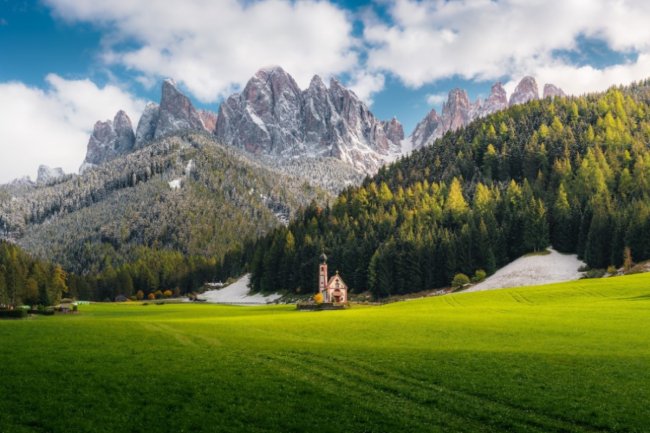Let’s go to the UK - and skip London!
The most beautiful natural attractions of the country
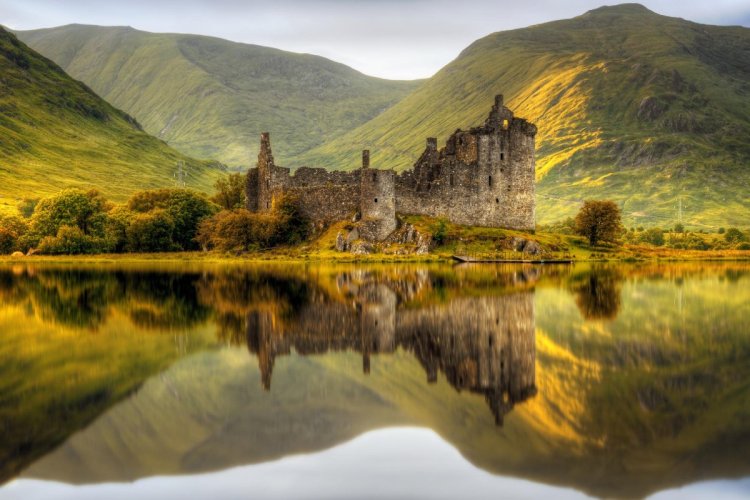
The coastal climate and warm currents have formed the unique natural landscape of Great Britain, where harsh northern nature and tropical plants, crystal clear lakes and majestic hills, dense forests and heathlands are combined. Today we will tell you about the most beautiful and majestic natural places in the UK, which inspired hundreds of poets and which shaped the unique mentality of the Brits.
Lake District
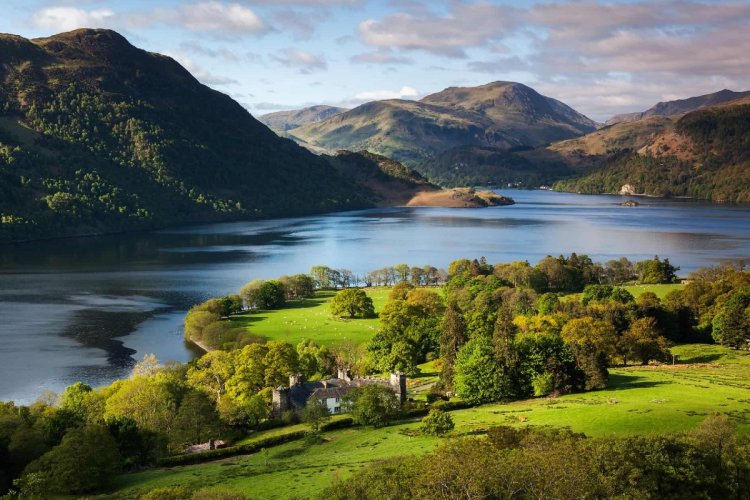
Lake District is the largest national park in the country. Traveling through this area promises to be an exciting adventure, because it has everything that even the most experienced traveler could look for: picturesque mountain peaks, unique plants, sky reflections in lakes, clear streams, pastures, fresh mountain air and varied landscapes. In addition, the highest point in England is located here - Mount Scafell Pike, 978 meters high. Interestingly, several railway routes are laid across the territory of the Lake District, which greatly facilitates travel for tourists without their own car.
We recommend staying in small guest houses to feel the atmosphere of this mysterious region even more deeply.
Jurassic Coast
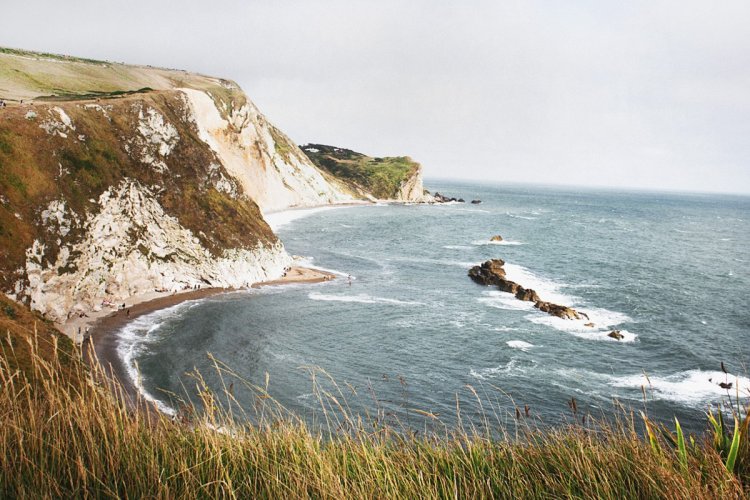
The Jurassic Coast is a rocky English Channel coastline that stretches 150 kilometers across Dorsetshire and East Devonshire. The name of this picturesque area comes from ancient rocks that formed about 185 million years ago during the Mesozoic era. It's worth a visit to see the amazingly varied and photogenic landscape in person: the Jurassic Coast is home to caves, bays, beaches, cliffs, natural arches and wind-carved rock formations reminiscent of ancient sculptures. It is said that ammonites - ancient mollusks preserved in stones - can often be found on the shore.
The Jurassic Coast became the first natural site in the UK to be designated a UNESCO World Heritage Site.
White Cliffs of Dover
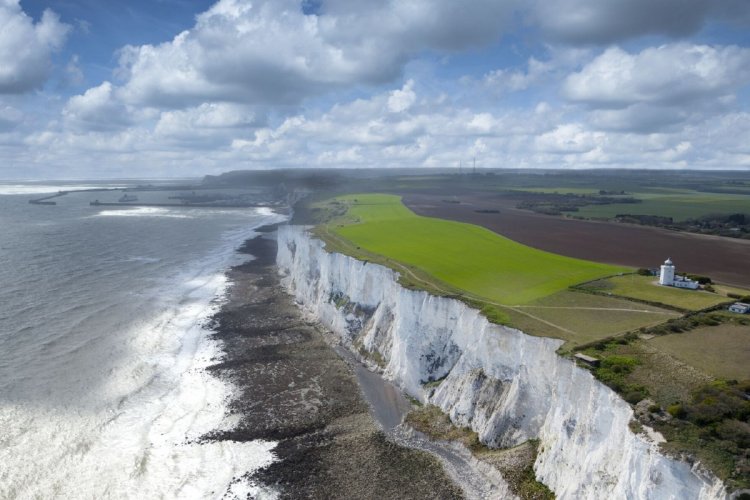
The majestic white cliffs towering above the azure waves of the English Channel amaze the imagination of all first-time visitors. In clear weather, this natural monument is visible even from the opposite shore, from the coast of the French Cape Gris-Nez. These limestone cliffs, up to 107 meters high, were formed during the Cretaceous period and served as landmarks for sailors during times of pirate raids and geographical discoveries, pointing to the English shores.
The white cliffs are also home to the famous Dover Castle, which was called the key to England during the Hundred Years' War. The White Cliffs of Dover are part of the famous 246km North Downs Way, which winds through the beautiful south-east England countryside from Surrey to Kent, making it a great choice for holiday hikers.
Seven Sisters Rocks
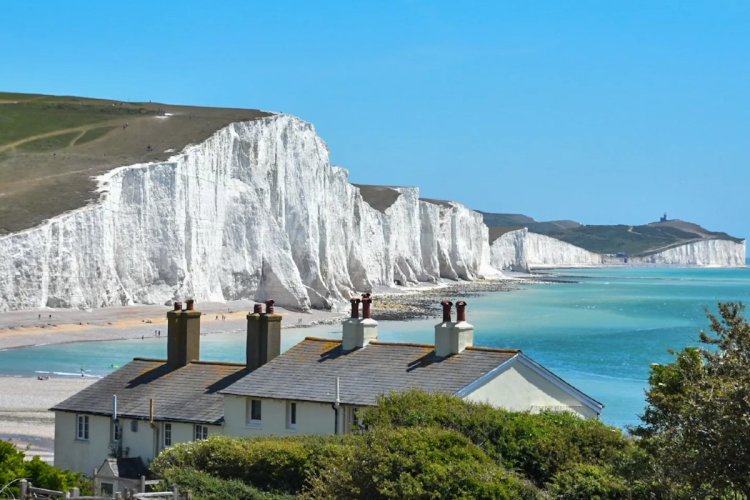
On the east coast of Sussex, between the towns of Seaford and Eastbourne, the Seven Sisters are another rolling chalk cliff. Despite its name, this group of white rocks actually consists of eight peaks. They are best seen from the sea, so it is recommended to take a ride past on a yacht or boat, if the weather permits - this place is often subject to strong winds. A walk along the coast will also be exciting: the contour of the coastline is carved by winds and waves, and the cliffs are covered with tall grass. However, it is better to visit this place on clear days, as strong winds can be dangerous in bad weather.
The Seven Sisters are considered to be less modified by humans than the White Cliffs of Dover, which is why they are often used as filming locations for historical and fantasy films. Some famous films filmed here include Atonement, Robin Hood: Prince of Thieves, Harry Potter and the Goblet of Fire and The Hitchhiker's Guide to the Galaxy. A little further south-east of Seven Sisters is Beachy Head, the highest chalk cliff in all of Britain.
Cheddar Gorge
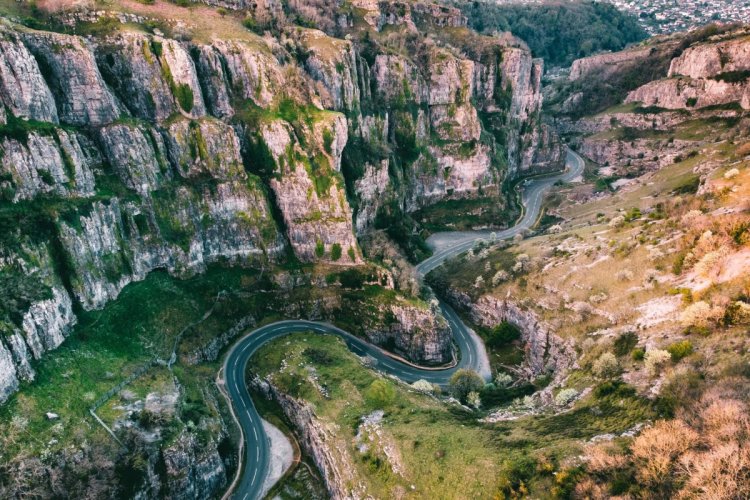
Cheddar Gorge is associated with the most famous variety of English cheese for a reason - the gorge is located near the picturesque village of Cheddar in Somerset and got its name after it. This is the largest gorge in the country, where ancient human remains dating back about nine thousand years have been discovered, indicating that the first people settled the lands of Great Britain in the Neolithic era. Majestic limestone cliffs, covered with forest and grass, frame the gorge, and inside the cave you can see stalactites and stalagmites created by nature over many centuries. The Cheddar Gorge is home to a small herd of wild Soya sheep, which are often encountered by tourists, adding to the uniqueness and atmosphere of this place.
Whistman Wood

The incredibly mysterious, ancient and beautiful highland Wistmans Wood is located in Devon at an altitude of 400 meters. This forest is the oldest in the country; it is believed that trees grew here seven thousand years BC. Today, the oldest plants in the forest are about 400–500 years old, many of them belong to relict species. Whistman Forest boasts many overgrown ferns and strange twisting oak trees, reminiscent of the dancing trees from Disney's Snow White. The trees are densely covered with moss and lichen, for which the British nicknamed them “old man’s beards.” This unique forest has inspired many artists, poets, writers and photographers, and has also become the source of many legends and folk tales, including the folklore motif of the Wild Hunt.
Archipelago of Scilly
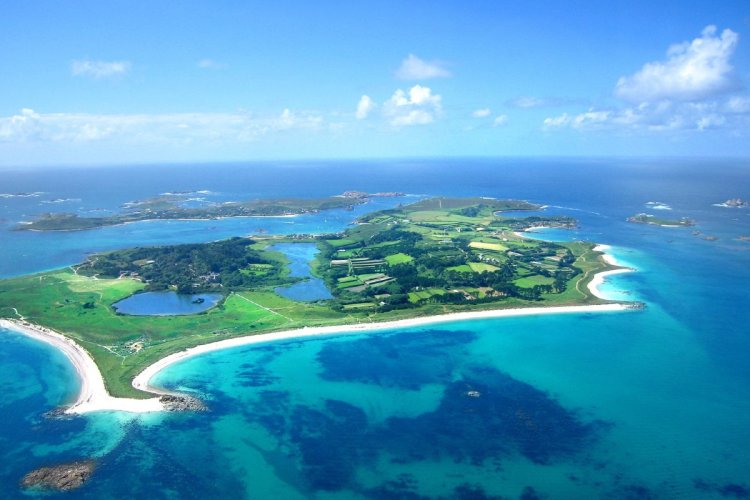
This amazing destination is rarely visited by tourists, which makes it even more attractive to travelers: an unspoilt, pastoral archipelago with a rich history, famous for its beautiful gardens, temperate climate and ideal scuba diving spots. The Isles of Scilly are located in the south-west of England, 45 kilometers from the coast of Cornwall, and are the southernmost point of Great Britain, which probably accounts for their pleasant mild climate. The archipelago includes almost 60 islands, but only 5 of them are permanently inhabited. The color of the water here is so beautiful that it is not inferior even to the Maldives.
Yorkshire Dales
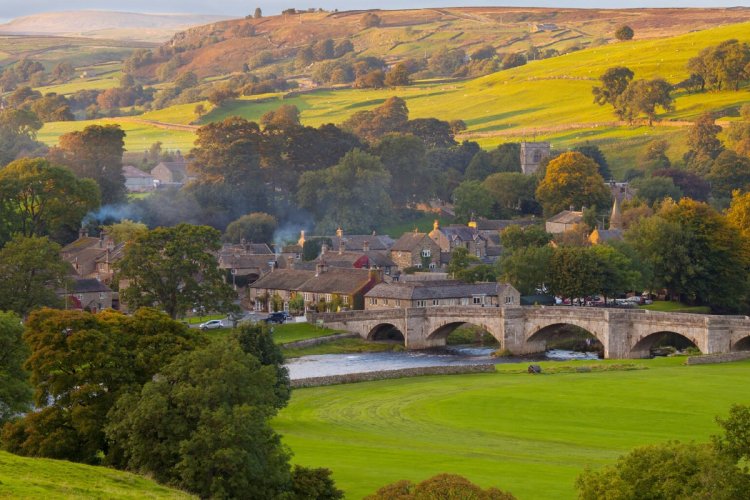
This rugged and hilly region, shaped by the movement of glaciers, is located in the Pennines, mainly in North Yorkshire (with a small part also in Cumbria). This place is known for its strong winds and changeable weather (especially in winter), but don't let that stop you, as these amazing valleys, mountains and moorlands are definitely worth visiting and soaking up the atmosphere. Places definitely worth a visit: the Malham Cove limestone amphitheater, Hardrow Force and Eistart Falls, Malham Tarn and Semerwater lakes, Gaping Gill Cave, Gordale Scar and much more. This national park is also home to the Three Peaks of Yorkshire: Mount Ingleborough, Mount Pen-y-Ghent and Mount Whernside.
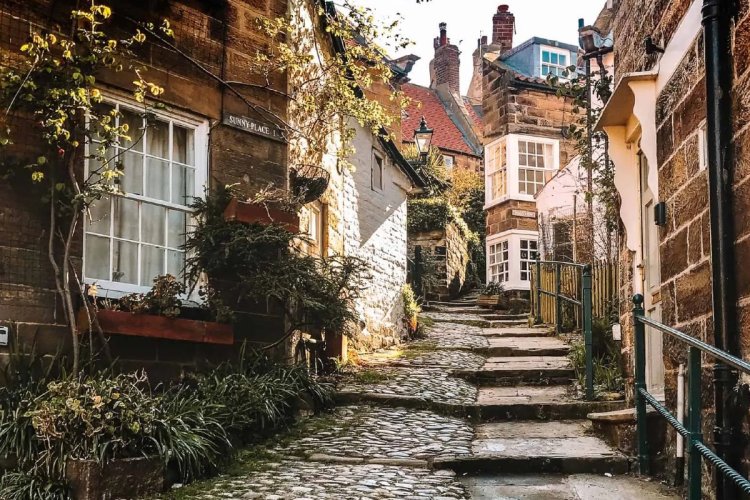
When visiting the Yorkshire Dales National Park, don't miss the opportunity to stop by the charming fishing village of Robin Hood's Bay, which, according to legend, has existed for over a thousand years. They say that the famous robber Robin Hood helped local residents fight off pirates, and as a sign of gratitude, the village was named after him. Today, cozy cobbled streets and old pubs have been preserved here, immersing you in the atmosphere of the Middle Ages. Nearby is Saltwick, one of the most popular beaches in the UK.
Kynance Cove
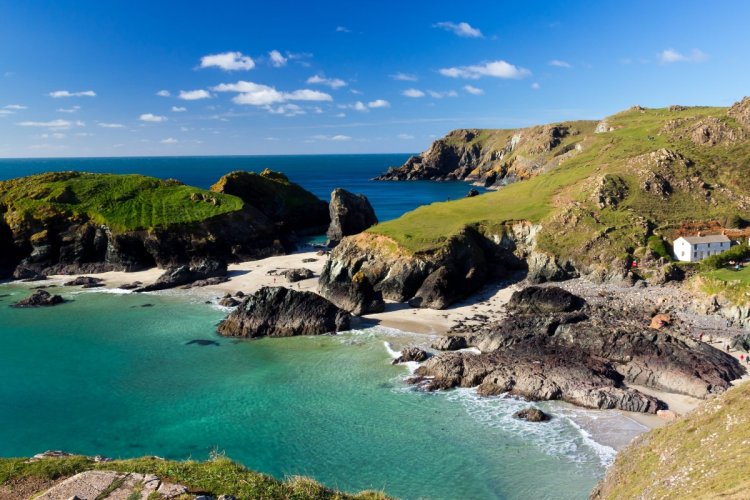
Suddenly in England you can find a place reminiscent of the Italian resorts of Sardinia - the picturesque Kynance Cove, hidden on the eastern side of Mounts Bay in Cornwall. This place is located on the southernmost peninsula of the region, Lizard. The bay attracts with its diversity during high and low tides: Poldark Beach is flooded with water at high tide, and at low tide amazing cliffs, stones of various shapes and even caves are revealed, including the beautiful Parlour Grotto. Sharks and dolphins flock to this coastline in spring, attracting marine life watchers, and large numbers of fur seals can be seen here on clear days.
New Forest
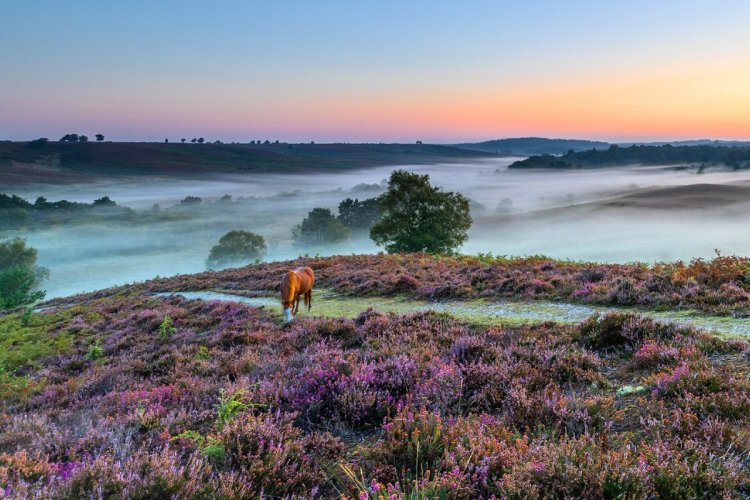
In the past, the New Forest was chosen for hunting by William the Conqueror himself, who declared it a protected forest. This has helped preserve the pristine beauty of this woodland, located between Wiltshire and Hampshire, with its colorful trees, moorland and flowering meadows. Today people come here not to hunt, but to enjoy the sights of white cows, red deer, wild ponies (including the rare New Forest and Shetland ponies) and the many species of birds that live in the countryside. Highlights of the New Forest include Boulderwood Deer Reserve, Buckler's Hard with Palace House, Exbury Gardens and the port town of Lymington.
Going to the UK to be alone with nature is a rather unusual choice, but who said that such a trip will not be memorable for you? When planning routes and preparing for your trip, don't forget to purchase your eSIM from fedafone for the UK - and then the absence of Wi-Fi won't stop you!


